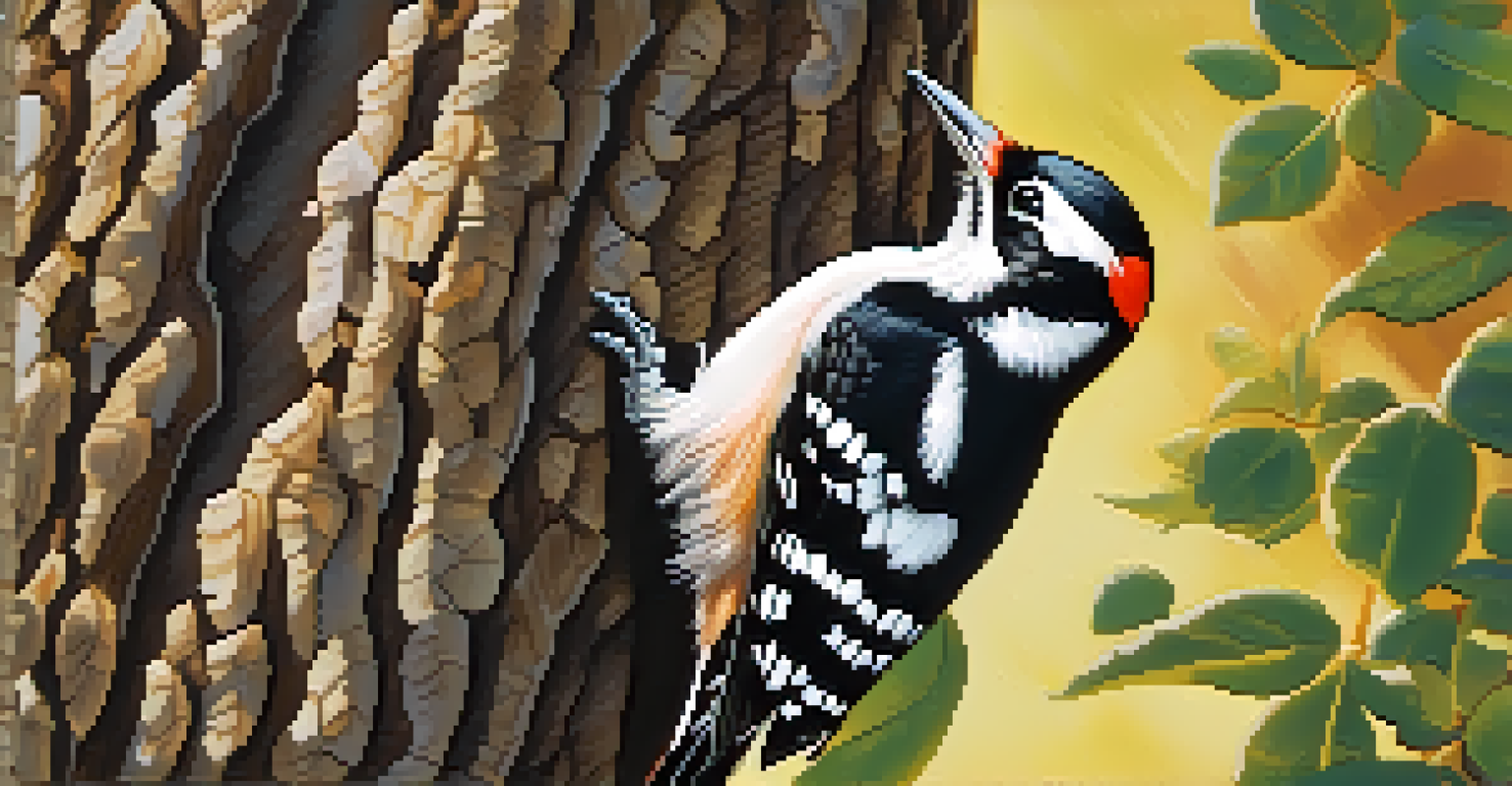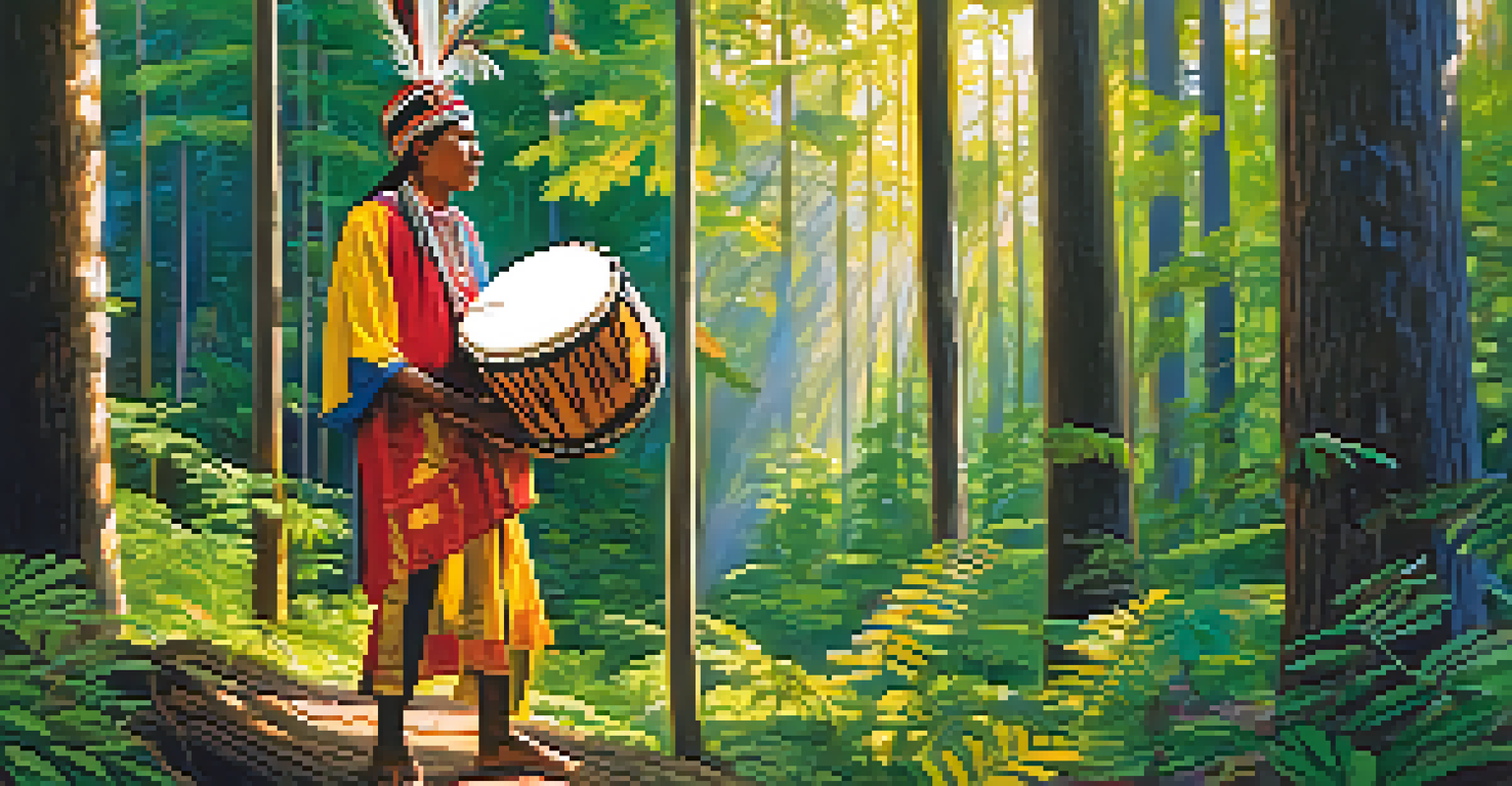The Intersection of Music, Rhythm, and Time in Nature

Understanding the Rhythm of Nature: A Natural Symphony
Nature is a constant orchestra, with sounds that create a rhythm all their own. From the rustling leaves to the chirping of crickets, these elements form a captivating symphony that echoes through our environment. Just as a musician relies on beats and measures, nature operates on its unique timing, creating a harmonious balance that often goes unnoticed.
Nature is not a place to visit. It is home.
Consider the way waves crash on a shore, each swell and retreat following a predictable rhythm. This natural cadence can evoke emotions similar to those experienced when listening to a favorite song. By tuning in to these sounds, we can appreciate the intrinsic relationship between music and the world around us.
As we delve deeper into this connection, it becomes clear that the rhythms of nature not only influence our auditory experiences but also inspire countless musical compositions. Artists have long drawn inspiration from the sounds of the earth, seamlessly blending the natural with the artistic.
Exploring the Role of Time in Natural Rhythms
Time in nature is a crucial element that shapes how we perceive rhythms. The changing seasons, the rise and fall of the sun, and the cycles of life all contribute to an intricate tapestry of timing that informs both natural processes and musical expressions. For instance, migratory patterns of birds often align with seasonal changes, creating a rhythm that resonates within the ecosystem.

Much like a metronome guides a musician, the natural world has its own way of keeping time. The predictable transitions, such as day turning into night, provide a backdrop for various forms of life and sound. This synchronization fosters an understanding of how rhythm and time intertwine to create a cohesive environment.
Nature's Rhythm Inspires Music
The sounds and rhythms of nature significantly influence musical compositions, connecting the art of music with the environment.
Through observing these natural rhythms, we gain insight into how composers and musicians utilize timing to evoke emotions and tell stories. The relationship between time and rhythm enhances our appreciation of both nature and music, allowing us to explore deeper meanings behind what we hear.
The Influence of Animal Sounds on Musical Rhythm
Animals contribute significantly to the musical landscape of nature, providing inspiration for countless musical pieces. The call of a loon, the croak of a frog, or the song of a nightingale can all serve as rhythmic motifs in compositions. These sounds not only reflect their environment but also invite musicians to incorporate them into their works, creating a bridge between nature and art.
The earth has music for those who listen.
For example, the distinct rhythm of a woodpecker tapping on a tree can influence a drummer's beat or a melody's timing. The way animals interact with their surroundings often mirrors the patterns found in music, highlighting the interconnectedness of life. This blending of sounds allows composers to capture the essence of nature within their pieces.
As we listen to these natural rhythms, we can appreciate how they inform various musical genres, from classical symphonies to modern electronic beats. The auditory world around us plays a vital role in shaping musical expression and broadening our understanding of rhythm.
The Impact of Human Activity on Natural Rhythms
As humans, we have a profound influence on the rhythms of nature. Urbanization, climate change, and pollution disrupt the natural symphony, altering the sounds we once took for granted. This dissonance can be seen in the way wildlife reacts to changes in their habitats, leading to a shift in the rhythms we associate with certain environments.
For instance, the once-frequent calls of certain birds may become a rare occurrence due to habitat loss. This alteration in soundscape not only affects the ecosystem but also impacts musicians who rely on these natural rhythms for inspiration. The loss of these sounds can create a gap in our understanding of the relationship between music and nature.
Impact of Human Activity on Nature
Human actions, such as urbanization and pollution, disrupt natural rhythms, affecting both ecosystems and the musical inspiration derived from them.
However, awareness of these changes can inspire us to take action. By working towards restoring natural habitats, we can help preserve the rhythms of nature while also enriching our musical experiences. This connection reinforces the idea that our actions have consequences, highlighting the importance of harmony between humanity and the natural world.
Cultural Perceptions of Rhythm in Nature
Different cultures interpret the rhythms of nature in various ways, showcasing the diversity of human experience. Indigenous communities often have a deep-rooted understanding of natural rhythms, reflecting their connection to the land and its cycles. This cultural perspective can be seen in traditional music, which often incorporates sounds from the environment, celebrating the intricate relationship between people and nature.
For instance, African drumming frequently mimics the sounds of animals and the environment, creating a rich tapestry of rhythm that resonates with the land. By examining these cultural interpretations, we can gain insight into how music reflects and shapes our understanding of natural rhythms.
As we explore these diverse perceptions, it becomes evident that music serves as a universal language, transcending boundaries and connecting people to the rhythms of nature. This cultural appreciation encourages us to respect and learn from different traditions, further enriching our experiences.
Nature as a Muse: Inspiring Musical Creativity
Many artists have turned to nature as a source of inspiration, channeling its rhythms and sounds into their music. The beauty of a forest, the serenity of a river, or the power of a storm can all evoke emotions that translate into creative expression. Nature provides a canvas for musicians to explore their thoughts and feelings, often resulting in profound works of art.
For example, composers like Claude Debussy drew heavily from natural imagery, creating pieces that evoke the sounds of water and wind. These compositions resonate with listeners, inviting them to experience the natural world through music. As a result, the connection between nature and creativity becomes a source of endless exploration.
Cultural Views on Nature's Sounds
Different cultures interpret the rhythms of nature in unique ways, reflecting their connection to the environment through traditional music.
By immersing ourselves in nature, we can unlock our own creative potential. Whether it's through writing, painting, or playing an instrument, the rhythms of the natural world can inspire us to express ourselves in ways we never thought possible.
The Future of Music and Nature: A Harmonious Relationship
As we move forward, the relationship between music and nature continues to evolve. The rise of technology has allowed for innovative ways to incorporate natural sounds into music, creating new genres and experiences. Artists are now blending electronic elements with organic sounds, forging a path that honors the rhythms of nature while embracing modernity.
This fusion not only enhances musical creativity but also raises awareness about environmental issues. By using natural sounds in their compositions, musicians can highlight the importance of preserving the world around us. This approach encourages listeners to engage with nature, fostering a sense of responsibility toward our environment.

Ultimately, the intersection of music, rhythm, and time in nature presents a unique opportunity for growth and understanding. By appreciating this relationship, we can cultivate a deeper connection to both music and the natural world, ensuring that future generations continue to experience the beauty and harmony that exists within.